Dietary phytochemicals regulate whole-body CYP1A1 expression through an arylhydrocarbon receptor nuclear translocator-dependent system in gut
- PMID: 17607366
- PMCID: PMC1890999
- DOI: 10.1172/JCI31647
Dietary phytochemicals regulate whole-body CYP1A1 expression through an arylhydrocarbon receptor nuclear translocator-dependent system in gut
Abstract
Cytochrome P450 1A1 (CYP1A1) is one of the most important detoxification enzymes due to its broad substrate specificity and wide distribution throughout the body. On the other hand, CYP1A1 can also produce highly carcinogenic intermediate metabolites through oxidation of polycyclic aromatic hydrocarbons. We describe what we believe to be a novel regulatory system for whole-body CYP1A1 expression by a factor originating in the gut. A mutant mouse was generated in which the arylhydrocarbon receptor nuclear translocator (Arnt) gene is disrupted predominantly in the gut epithelium. Surprisingly, CYP1A1 mRNA expression and enzymatic activities were markedly elevated in almost all non-gut tissues in this mouse line. The induction was even observed in early-stage embryos in pregnant mutant females. Interestingly, the upregulation was CYP1A1 selective and lost upon administration of a synthetic purified diet. Moreover, the increase was recovered by addition of the natural phytochemical indole-3-carbinol to the purified diet. These results suggest that an Arnt-dependent pathway in gut has an important role in regulation of the metabolism of dietary CYP1A1 inducers and whole-body CYP1A1 expression. This machinery might be involved in naturally occurring carcinogenic processes and/or other numerous biological responses mediated by CYP1A1 activity.
Figures
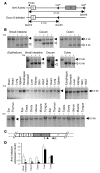
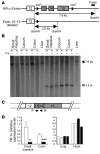
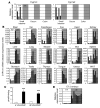
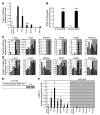
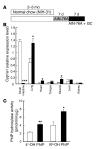
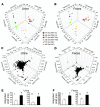
Similar articles
-
Genistein decreases basal hepatic cytochrome P450 1A1 protein expression and activity in Swiss Webster mice.Nutr Res. 2016 May;36(5):430-9. doi: 10.1016/j.nutres.2016.01.001. Epub 2016 Jan 8. Nutr Res. 2016. PMID: 27101761
-
4S polycyclic aromatic hydrocarbon receptor (glycine N-methyltransferase) and the aryl hydrocarbon receptor nuclear translocator (hypoxia inducible factor-1β) interaction in Chinese hamster ovary and rat hepatoma cells: 4S PAH-R/ARNT hetero-oligomers?J Cell Biochem. 2011 Aug;112(8):2015-8. doi: 10.1002/jcb.23120. J Cell Biochem. 2011. PMID: 21445860
-
TLR2 controls intestinal carcinogen detoxication by CYP1A1.PLoS One. 2012;7(3):e32309. doi: 10.1371/journal.pone.0032309. Epub 2012 Mar 19. PLoS One. 2012. PMID: 22442665 Free PMC article.
-
Regulation of cytochrome P-450 (CYP) 1B1 in mouse Hepa-1 variant cell lines: A possible role for aryl hydrocarbon receptor nuclear translocator (ARNT) as a suppressor of CYP1B1 gene expression.Mol Pharmacol. 1999 Mar;55(3):594-604. Mol Pharmacol. 1999. PMID: 10051545
-
Regulation of CYP1A1 by heavy metals and consequences for drug metabolism.Expert Opin Drug Metab Toxicol. 2009 May;5(5):501-21. doi: 10.1517/17425250902918302. Expert Opin Drug Metab Toxicol. 2009. PMID: 19416086 Review.
Cited by
-
Amelioration of Clostridium difficile Infection in Mice by Dietary Supplementation With Indole-3-carbinol.Ann Surg. 2017 Jun;265(6):1183-1191. doi: 10.1097/SLA.0000000000001830. Ann Surg. 2017. PMID: 27280500 Free PMC article.
-
Aryl hydrocarbon receptor: current perspectives on key signaling partners and immunoregulatory role in inflammatory diseases.Front Immunol. 2024 Aug 15;15:1421346. doi: 10.3389/fimmu.2024.1421346. eCollection 2024. Front Immunol. 2024. PMID: 39211042 Free PMC article. Review.
-
Intestinal inflammation and the diet: Is food friend or foe?World J Gastrointest Surg. 2016 Feb 27;8(2):115-23. doi: 10.4240/wjgs.v8.i2.115. World J Gastrointest Surg. 2016. PMID: 26981185 Free PMC article. Review.
-
Allelic variants of the aryl hydrocarbon receptor differentially influence UVB-mediated skin inflammatory responses in SKH1 mice.Toxicology. 2018 Feb 1;394:27-34. doi: 10.1016/j.tox.2017.11.020. Epub 2017 Nov 29. Toxicology. 2018. PMID: 29197551 Free PMC article.
-
Metabolomics identifies an inflammatory cascade involved in dioxin- and diet-induced steatohepatitis.Cell Metab. 2012 Nov 7;16(5):634-44. doi: 10.1016/j.cmet.2012.10.006. Cell Metab. 2012. PMID: 23140643 Free PMC article.
References
-
- Brooks R.A., Gooderham N.J., Edwards R.J., Boobis A.R., Winton D.J. The mutagenicity of benzo[a]pyrene in mouse small intestine. Carcinogenesis. 1999;20:109–114. - PubMed
-
- Kaminsky L.S., Zhang Q.Y. The small intestine as a xenobiotic-metabolizing organ. Drug Metab. Dispos. 2003;31:1520–1525. - PubMed
-
- Lindell M., Lang M., Lennernas H. Expression of genes encoding for drug metabolising cytochrome P450 enzymes and P-glycoprotein in the rat small intestine; comparison to the liver. Eur. J. Drug Metab. Pharmacokinet. 2003;28:41–48. - PubMed
-
- Zhang Q.Y., Dunbar D., Kaminsky L.S. Characterization of mouse small intestinal cytochrome P450 expression. Drug Metab. Dispos. 2003;31:1346–1351. - PubMed
-
- Ma Q. Induction of CYP1A1. The AhR/DRE paradigm: transcription, receptor regulation, and expanding biological roles. Curr. Drug Metab. 2001;2:149–164. - PubMed
Publication types
MeSH terms
Substances
Grants and funding
LinkOut - more resources
Full Text Sources
Molecular Biology Databases

